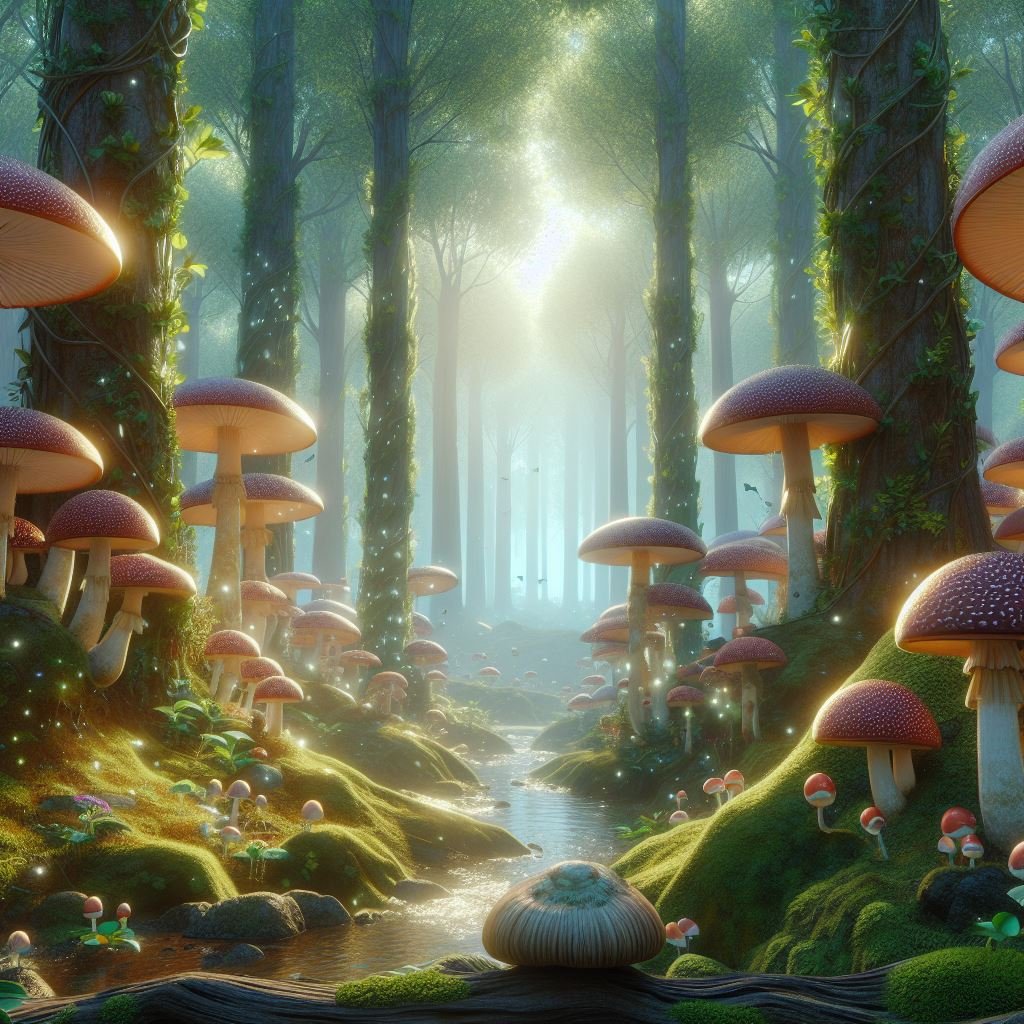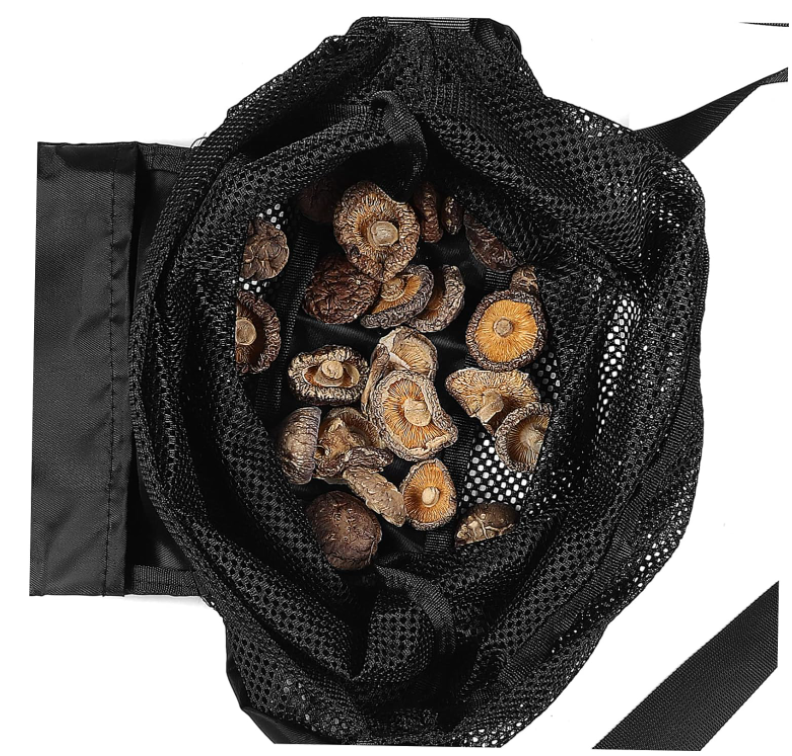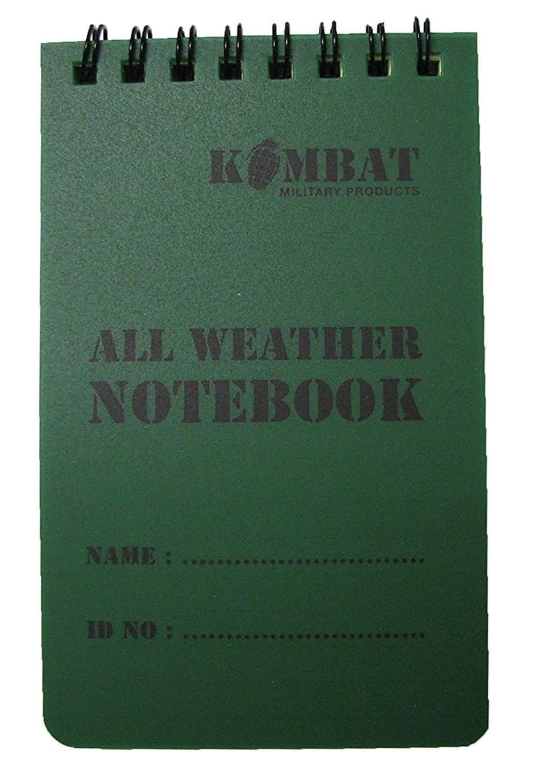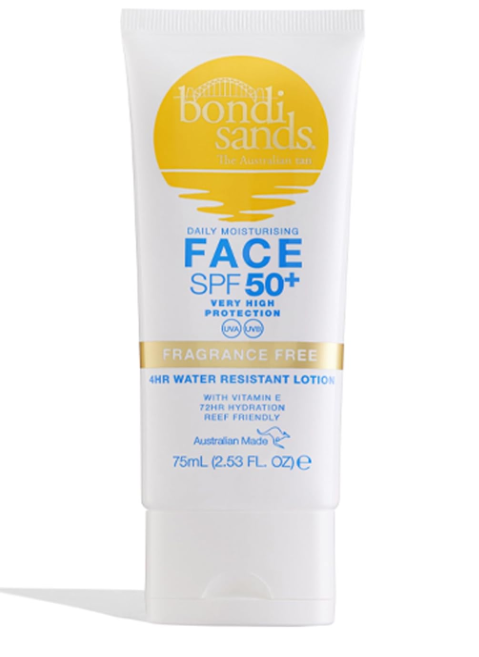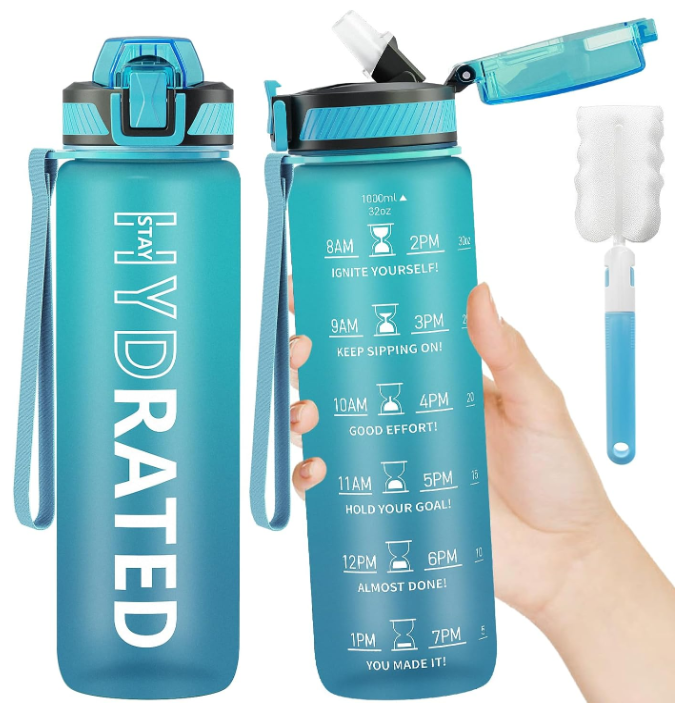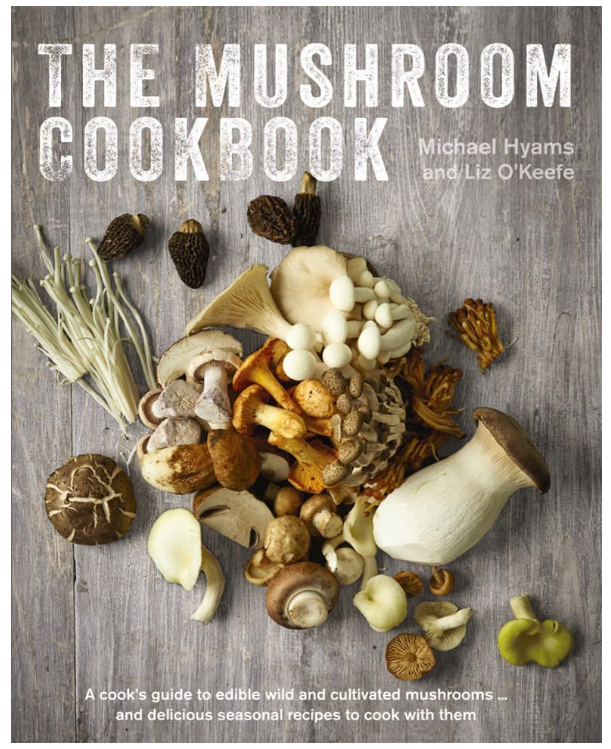BestFitFinder is supported by its audience. When you purchase using link in our website, we may earn an affiliate commission. Learn more
Embark on a thrilling journey into the world of mushroom picking and discover the exquisite culinary delights that lie hidden beneath the forest floor. With the proper guidance and a keen eye for detail, you can embark on a rewarding adventure that yields a bountiful harvest of edible mushrooms.
Laying the Foundation mushroom picking: Understanding Mushrooms and Their Delicacy
The world of mushrooms is a realm of fascinating diversity, with over 10,000 species known to exist. These enigmatic organisms, classified as fungi, play crucial roles in ecosystems as decomposers, recycling nutrients back into the soil. While some mushrooms are inedible or even poisonous, others possess an exquisite culinary reputation, earning them the moniker of “fungi delicacies.”
Decoding the Mushroom Kingdom
A fundamental aspect of mushroom picking lies in understanding the distinct characteristics that separate edible from poisonous species. Edible mushrooms typically display a robust, healthy appearance, with smooth caps and firm stems. Their gills, the underside of the cap where spores are produced, may be white, yellow, brown, or even orange. Edible mushrooms emit a pleasant aroma and have a taste that is either mild or subtly earthy.
Cap Shape and Appearance
Edible mushrooms often exhibit a smooth, rounded cap with a defined edge. Cap colours can vary widely, from white to brown, yellow, or even red. Some species may feature characteristic markings, such as spots or patterns, on their caps.
Gill Structure and Colour
Gills, the delicate under surfaces of mushroom caps, play a vital role in spore production. Edible mushrooms generally have well-defined gills that are either white, yellow, brown, or orange. The spacing and arrangement of gills can also be diagnostic features.
Stalk Characteristics
The stalks of edible mushrooms are typically firm and smooth, with a consistent thickness throughout. Some species may have a bulbous base or a distinctive constriction at the junction with the cap. The colour of the stalk can provide additional clues, although it may vary depending on the mushroom’s maturity.
Aroma and Taste
Edible mushrooms typically emit a pleasant, earthy aroma, sometimes with hints of fruitiness or damp forest floor. The taste can vary from mild and nutty to slightly sweet or even tangy. However, not all edible mushrooms have a strong flavour or a distinct aroma.
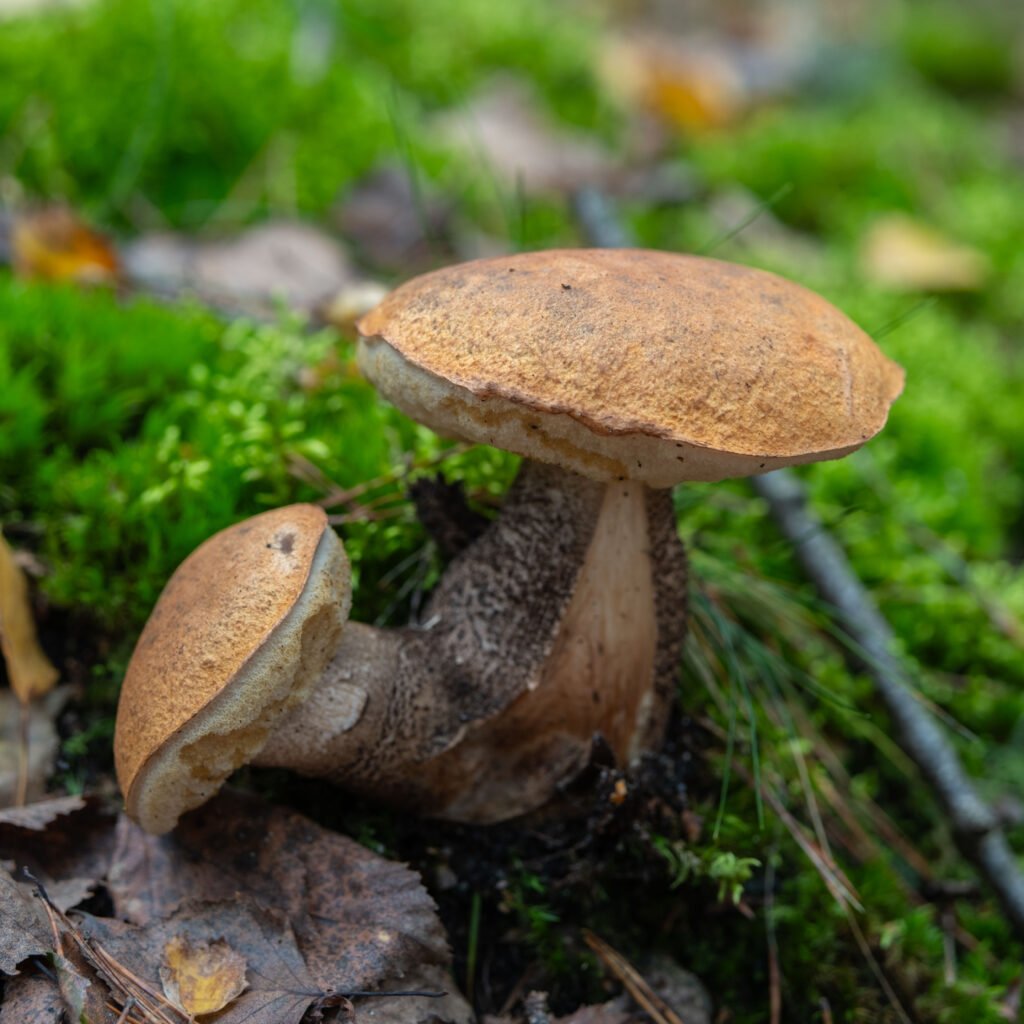
Beware of Look-Alikes
The subtle distinctions between edible and poisonous mushrooms can be deceiving, creating seemingly indistinguishable “look-alikes”. It is crucial to exercise extreme caution when identifying mushrooms, and never rely solely on appearance. Consulting a reliable field guide or seeking expert guidance is essential for ensuring accurate identification.
Caveat Emptor: The Peril of Poisonous Look-Alikes
The crucial distinction between edible and poisonous mushrooms lies in their subtle differences, often creating visually indistinguishable “look-alikes.” Misidentifying a poisonous mushroom can have severe consequences, ranging from mild digestive discomfort to life-threatening reactions. Caution is paramount when embarking on the mushroom picking journey, and it is essential to err on the side of caution by refraining from consuming any mushroom unless absolutely certain of its identity.

The Rewards of Informed Foraging
The allure of mushroom picking lies not only in the thrill of the hunt but also in the satisfaction of discovering nature’s edible treasures. The culinary versatility of wild mushrooms allows for a world of culinary exploration, adding depth and flavor to dishes from soups and stews to stir-fries and pasta creations. However, it is important to approach mushroom picking with a genuine respect for the delicate ecosystem and the potential consequences of misidentification.

The Importance of Caution
With over 10,000 mushroom species worldwide, and countless look-alikes, mushroom picking demands a deep respect for the potential consequences of misidentification. Always err on the side of caution and refrain from consuming any mushroom unless absolutely certain of its identity. A single mistaken mushroom can lead to severe illness, even death. Seek expert guidance or rely on a reputable field guide to ensure accurate identification before consuming wild mushrooms.
Equipping Yourself for the Foraging Adventure
Embark on your mushroom picking journey equipped with the necessary tools and resources to ensure a safe, enjoyable, and fruitful experience. Here’s a checklist of essential items to gather before heading out into the wild:
1. Field Guide: The cornerstone of any mushroom picking endeavor, a reliable field guide provides detailed descriptions, illustrations, and keys to help you identify edible and poisonous species. Choose a guide specifically designed for your region, as mushroom species vary widely across different climates.
2. Pocket Knife: A sharp pocket knife is essential for harvesting mushrooms, allowing you to cut the stem at the base without damaging the delicate mycelium, the underground network from which mushrooms grow.
3. Basket or Mesh Bag: Avoid using plastic bags, which can trap spores and prevent mushroom growth. Instead, opt for a breathable mesh bag or a sturdy basket that allows spores to disperse freely.
4. Camera: Capture images of the mushrooms you find, including close-ups of key identifying features such as cap shape, gill structure, stalk characteristics, and spore print. These photos can later be used for reference and identification purposes. You can use your smartphone for this task.
5. Weather-Resistant Notebook and Pencil: Keep a weather-resistant notebook and pencil handy to record your mushroom findings, including location, date, and any observations that may aid in identification.
6. Map or GPS Device: Familiarize yourself with a map or GPS app to help you navigate safely and confidently in the foraging area. Stay on marked trails and avoid venturing into unmarked or hazardous areas.
7. Sunscreen, Hat, and Insect Repellent: Protect yourself from the sun, wear a hat to shield your eyes, and consider using insect repellent to avoid bites while spending time outdoors.
Bondi Sands Fragrance Free Face Sunscreen Lotion SPF 50+ | Gentle Formula Moisturises + Provides Broad-Spectrum Protection, Enriched with Aloe Vera and Vitamin E, Vegan + Cruelty Free | 75 mL/2.53 Oz
8. Snacks and Water: Pack plenty of snacks and water to stay hydrated and energized throughout your foraging adventure.
QLUR Water Bottle with Straw, 1L Drinks Bottle with Time Markings-Tritan BPA Free-Sports Water Bottle Leakproof with Lock Cover, Motivational Water Bottles for Gym, Hiking, Fitness, Yoga (1 Bottle)
9. Respectful Attitude: Approach the mushroom picking experience with a respectful attitude towards nature and the ecosystem. Leave no trace of your presence, tread lightly, and avoid damaging vegetation or disturbing wildlife.

Remember, mushroom picking is a journey of learning and discovery. Start with a few beginner-friendly species, seek guidance from experienced mushroom hunters, and always err on the side of caution. With proper preparation, enthusiasm, and a deep respect for nature, you can embark on a rewarding and enriching foraging experience.
Selecting the Right Picking Locations
Choosing the right locations for mushroom picking is crucial for finding abundant and edible mushrooms while minimizing the risk of encountering poisonous species. Here are some key considerations when selecting foraging spots:
1. Habitat Preferences
Different mushroom species thrive in specific habitats, so it’s essential to understand the preferences of the mushrooms you’re seeking. Some common habitat types include:
– Deciduous and coniferous forests: Home to a wide variety of mushrooms, including chanterelles, boletes, and morels.
– Grasslands and meadows: Favored by mushrooms like puffballs, meadow mushrooms, and coral mushrooms.
– Decaying logs and stumps: Support the growth of parasitic mushrooms like oysters, chanterelles, and hedgehog mushrooms.
2. Availability of Water
Mushrooms require adequate moisture to grow, so look for areas with moist soil or near bodies of water.
3. Diversity of Vegetation
A diverse ecosystem with a variety of trees, shrubs, and plants provides a rich source of nutrients for mushroom growth.
4. Avoid Disturbed Areas
Stay away from areas with heavy human activity, industrial sites, or landfills, as these areas may be contaminated with pollutants that can harm your health.
5. Start with Familiar Locations
As a beginner, it’s advisable to start exploring areas you’re familiar with, gradually venturing into new locations as your knowledge and experience grow.
6. Seek Permission
If you plan to forage on private land, always seek permission from the landowner to avoid trespassing.
7. Observe Seasonality
Different mushroom species have peak seasons, so research the fruiting times of the mushrooms you’re interested in before heading out.
8. Timing is Key
Visit foraging spots early in the morning or late in the afternoon when mushrooms are less likely to be damaged by insects or other wildlife.
9. Leave No Trace
Minimize your impact on the ecosystem by leaving no trace of your presence, carrying out all waste, and treading lightly on vegetation.
Identifying Edible Mushrooms: A Step-by-Step Guide
Mushroom identification is a crucial skill for safe and successful foraging. While it’s tempting to rely on appearances alone, this can be a dangerous practice. Here’s a step-by-step guide to help you confidently identify edible mushrooms:
Step 1: Gather Information:
Before venturing into the wild, equip yourself with a reliable field guide specifically designed for your region. Familiarize yourself with the key characteristics of edible and poisonous mushrooms, including cap shape, gill structure, stalk characteristics, spore color, habitat preferences, and odor.
Step 2: Start with Beginner-Friendly Species:
As a beginner, focus on identifying a few well-known and easily recognizable edible mushrooms, such as Chanterelles, Morels, Oyster mushrooms, Portobello mushrooms, and Shiitake mushrooms. These species have distinct features that make them relatively easy to differentiate from poisonous look-alikes.
Step 3: Thoroughly Examine the Mushroom:
When examining a mushroom, take note of its overall appearance, including:
- Cap shape and color: Is the cap smooth, wrinkled, or lobed? What is its color?
- Gill structure and color: Are the gills attached to the stem, free, or decurrent? What is their color?
- Stalk characteristics: Is the stalk thick or thin? Is it smooth or textured? Does it have a bulbous base or a ring?
- Spore print: To determine the spore color, carefully cut the mushroom’s gills onto a piece of white paper. The color of the spores that drop will provide additional clues to its identity.
- Odor: Crush a small piece of the mushroom and observe its odor. Some edible mushrooms have distinctive aromas, while others may be odorless.
- Habitat preferences: Note the type of habitat where you found the mushroom. Some species are strongly associated with specific habitats, which can aid in identification.
Step 4: Consult a Reliable Source:
If you’re unsure about the identity of a mushroom, always consult a reliable field guide or seek expert guidance from experienced mushroom hunters. Never consume any mushroom unless you are absolutely certain of its identity.
Step 5: Leave No Trace:
After carefully examining the mushroom, gently cut it at the base of the stem without damaging the surrounding vegetation. Place the mushroom in a breathable mesh bag or basket to allow spores to disperse and promote mushroom growth.
Cooking and Enjoying Your Foraged Bounty
The culmination of your mushroom picking journey lies in savouring the culinary delights of your foraged bounty. With their rich flavours, umami depth, and versatility, wild mushrooms can transform ordinary dishes into extraordinary culinary creations.
Harvesting and Handling:
When harvesting mushrooms, always cut the stem at the base, leaving a small portion attached to the mycelium, the underground network from which mushrooms grow. This practice helps to conserve the mushroom’s ability to repopulate the area. Avoid pulling mushrooms out of the ground, as this can damage the mycelium and prevent future mushroom growth.
Storing and Prepping:
Freshly picked mushrooms should be stored in a cool, dry place to preserve their freshness. Avoid storing them in plastic bags, which can trap moisture and promote spoilage. Instead, use breathable mesh bags or baskets to allow for proper air circulation.
Cleaning wild mushrooms is relatively simple. Gently brush away any dirt or debris with a soft brush or cloth. Avoid washing mushrooms under running water, as this can dilute their flavor and texture.
Cooking Techniques:
Wild mushrooms are incredibly versatile and can be enjoyed in a variety of dishes. Some popular cooking techniques include:
- Sautéing: Sautéing is a quick and easy method that brings out the natural flavors of mushrooms. Heat a pan over medium heat, add a drizzle of olive oil, and sauté mushrooms until they are tender and slightly browned.
- Braising: Braising involves slowly cooking mushrooms in a flavorful liquid, such as broth, wine, or cream. This method tenderizes the mushrooms and creates a rich, savory sauce.
- Frying: Frying mushrooms in butter or oil adds a crispy texture and enhances their flavor.
- Roasting: Roasting mushrooms in the oven intensifies their flavor and caramelizes their natural sugars.
Recipe Ideas:
Here are a few recipe ideas to get you started:
- Creamy Wild Mushroom Pasta: Sauté mushrooms with garlic, shallots, and white wine. Toss them with cooked pasta, a touch of cream, and grated Parmesan cheese.
- Wild Mushroom Risotto: Sauté mushrooms with onions and garlic. Gradually add arborio rice and broth, stirring constantly until the risotto is creamy and the mushrooms are tender.
- Wild Mushroom Frittata: Sauté mushrooms with onions, bell peppers, and spinach. Add beaten eggs, cheese, and herbs, and bake until golden brown.
- Wild Mushroom Bruschetta: Toast bread slices. Top them with sautéed mushrooms, crumbled goat cheese, and fresh herbs.
- Wild Mushroom Soup: Sauté mushrooms with onions and garlic. Add vegetable broth, cream, and herbs. Blend until smooth and serve hot.
Embrace the Adventure of mushroom picking:
Mushroom picking is a journey of exploration, education, and culinary delight. With care, knowledge, and a passion for nature, you can transform your foraging adventures into a source of culinary inspiration and satisfaction. So, grab your basket, head out into the woods, and let the magic of wild mushrooms guide you on a culinary adventure.
FAQs
Q: Can I pick mushrooms in the UK?
A: Yes, you are allowed to pick wild mushrooms in the UK for personal consumption. However, there are some restrictions on where you can pick mushrooms and how many you can pick.
Q: Where can I pick mushrooms in the UK?
A: You can pick mushrooms on any land that is not privately owned or fenced off. This includes public parks, forests, and common land. However, you should always check with the landowner or the relevant authority before picking mushrooms on private land.
Q: How many mushrooms can I pick?
A: In regards to 3 of the F’s we go by what the countryside act says, picking responsibly for personal consumption. However with regards to fungus we go by what the British mycological institute said, which was that you should never pick more than 1.7 kg of mushrooms on any foray. This is a citation from Foraging Code.
Q: What are the penalties for picking poisonous mushrooms?
A: It is illegal to pick or sell poisonous mushrooms in the UK. If you are found guilty of picking poisonous mushrooms, you could be fined up to £5,000 or imprisoned for up to six months.
Q: What should I do if I am unsure about the identity of a mushroom?
A: If you are unsure about the identity of a mushroom, it is important not to pick it. If you are unsure about whether a mushroom is poisonous, it is best to err on the side of caution and not eat it.
Q: What resources are available for mushroom identification?
There are a number of resources available for mushroom identification, including:
- Field guides: There are a number of field guides available that can help you identify edible and poisonous mushrooms.
- Expert advice: You can also seek advice from experienced mushroom hunters or experts at your local nature center.
- Online resources: There are also a number of online resources that can help you identify mushrooms.
With careful planning and a good understanding of mushroom identification, you can enjoy the rewarding experience of mushroom picking safely and responsibly.
Q: What is edible mushroom a good source of?
- Protein: Mushrooms are a good source of protein, providing about 3-8 grams of protein per 100 grams of mushrooms. Protein is essential for building and repairing tissues, producing enzymes and hormones, and transporting nutrients.
- Fiber: Mushrooms are a good source of dietary fiber, which helps to regulate digestion, promote gut health, and lower cholesterol levels.
- B vitamins: Mushrooms are a good source of B vitamins, including B1, B2, B3, B5, B6, B9, and B12. B vitamins play a variety of important roles in the body, including supporting metabolism, energy production, and nervous system function.
- Minerals: Mushrooms are a good source of minerals, including potassium, phosphorus, magnesium, zinc, and selenium. These minerals are essential for bone health, muscle function, and immune system function.
- Antioxidants: Mushrooms are a good source of antioxidants, which help to protect cells from damage caused by free radicals. Free radical damage is associated with aging, chronic diseases, and cancer.
- Phytonutrients: Mushrooms contain a variety of phytonutrients, which have antioxidant and anti-inflammatory properties. Phytonutrients may help to reduce the risk of chronic diseases, such as heart disease, cancer, and Alzheimer’s disease.
In addition to their nutritional value, edible mushrooms are also a good source of umami flavor, which is often described as savory or meaty. This makes mushrooms a versatile ingredient that can be used in a variety of dishes, from soups and stews to stir-fries and pasta dishes.
Q: Is eating mushrooms daily good for health?
A: Eating mushrooms regularly can be beneficial for your health. Mushrooms are a good source of nutrients, including protein, fiber, B vitamins, minerals, antioxidants, and phytonutrients. These nutrients can help to promote overall health and well-being.
Some specific benefits of eating mushrooms daily include:
- Boosting your immune system: Mushrooms contain compounds that can help to boost your immune system and protect against infection.
- Reducing your risk of chronic diseases: Mushrooms may help to reduce your risk of chronic diseases, such as heart disease, cancer, and Alzheimer’s disease.
- Improving your gut health: Mushrooms are a good source of prebiotics, which are non-digestible fibers that feed the beneficial bacteria in your gut.
- Enhancing your cognitive function: Mushrooms may help to improve your cognitive function and memory.
- Promoting weight loss: Mushrooms are low in calories and fat, making them a healthy choice for people trying to lose weight.
- Adding flavor to your diet: Mushrooms are a versatile ingredient that can be used in a variety of dishes, making them a great way to add flavor and nutrients to your diet.
Of course, it is important to note that eating too much of anything can be harmful, and this is also true for mushrooms. It is generally recommended to eat a variety of foods from all food groups, including mushrooms, to ensure you are getting all the nutrients you need. For more information please visit this website.


